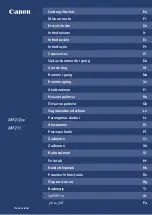
4-12
Troubleshooting
Rev. A
C o n fid e n tia l
Semi-automatic
loading is not
executed.
(Paper is not
fed.)
The paper supply
operation may be
incorrect.
A
Check if the paper roll meets
printer specifications.
Use the correct paper roll.
(See “
P
P
P
Pa
a
a
ap
p
p
pe
e
e
er
r
r
r S
S
S
Sp
p
p
pe
e
e
ec
c
c
ciiiiffffiiiic
c
c
ca
a
a
attttiiiio
o
o
on
n
n
nssss”
””
”
in Chapter 1.)
The paper path may
be incorrect.
A
Check if the paper supply path
is blocked by paper particles or
foreign materials.
Remove any pieces of
paper, paper particles, or
foreign materials.
The connector is not
inserted correctly.
A
Make sure the PF motor cable
pins are inserted in connector
CN6 of the main circuit board.
Reinsert the connector.
The paper feed motor
may be bad.
B
Check if the motor rotates
during semi-automatic loading.
Replace the paper feed
motor.
The paper hold roller
assembly may be
worn.
B
Check if the paper hold rollers
are worn or damaged.
Replace the paper hold
roller assembly.
The gears may be
worn or damaged.
B
Check if the paper feed
reduction gear and paper feed
gear are worn or damaged.
Replace any worn or
damaged parts.
The paper detection
switch assembly may
be bad.
B
Using an oscilloscope, check if
the detection signal is output
when roll paper is inserted.
Replace the paper
detection switch assembly.
Table 4-2 Troubleshooting table for bad printing
Problem
Probable cause
Level
Checkpoint
Action
The printer does
not print. (The
carriage motor
operates, but
nothing is
printed, or the
print color is
light.)
The ribbon in the
ribbon cassette may
be bad.
A
Check if the color of the ribbon
is faded or the ribbon is
wrinkled or torn.
Replace the ribbon
cassette.
The platen gap may
be incorrect.
B
Check the platen gap
(standard: 0.55 mm ± 0.05 mm).
Adjust the platen gap.
(See “Adjustments” in
Chapter 5.)
The common wire of
the print head unit
may be bad.
B
Check the continuity of the
common wire.
Replace the print head
unit.
The head flexible
plastic cable (FPC)
may be bad.
B
Check the continuity of the
common line.
Replace the head FPC.
Dots are missing
continuously. (A
specific dot is
not printed.)
The head FPC may be
bad.
B
Check the continuity of the
head FPC.
Replace the head FPC.
The drive coil of the
print head unit may
be bad.
B
Using a meter, check the
resistance of the corresponding
drive coil. (Standard: 19.2 ohms
± 5%)
Replace the print head
unit.
The dot wires of the
print head unit may
be bad.
B
Check if the dot wires are
broken.
Replace the print head
unit.
Table 4-1 Troubleshooting table for printer operation failure (Continued)
Problem
Probable cause
Level
Checkpoint
Action
Summary of Contents for TM-U200 Series
Page 6: ...iv Confidential Revision Sheet Revision Page Altered Items and Contents Rev A ...
Page 72: ...2 30 Mechanism Configuration and Operating Principles Rev A Confidential ...
Page 172: ...6 Appendix Rev A Confidential Main Circuit Board Parts Layout ...
Page 176: ...10 Appendix Rev A Confidential ...
Page 186: ...Rev A Appendix A 20 TM U200 Series Type A AM Technical Manual Confidential ...
Page 187: ...Confidential SEIKO EPSON CORPORATION Printed in Japan ...
















































